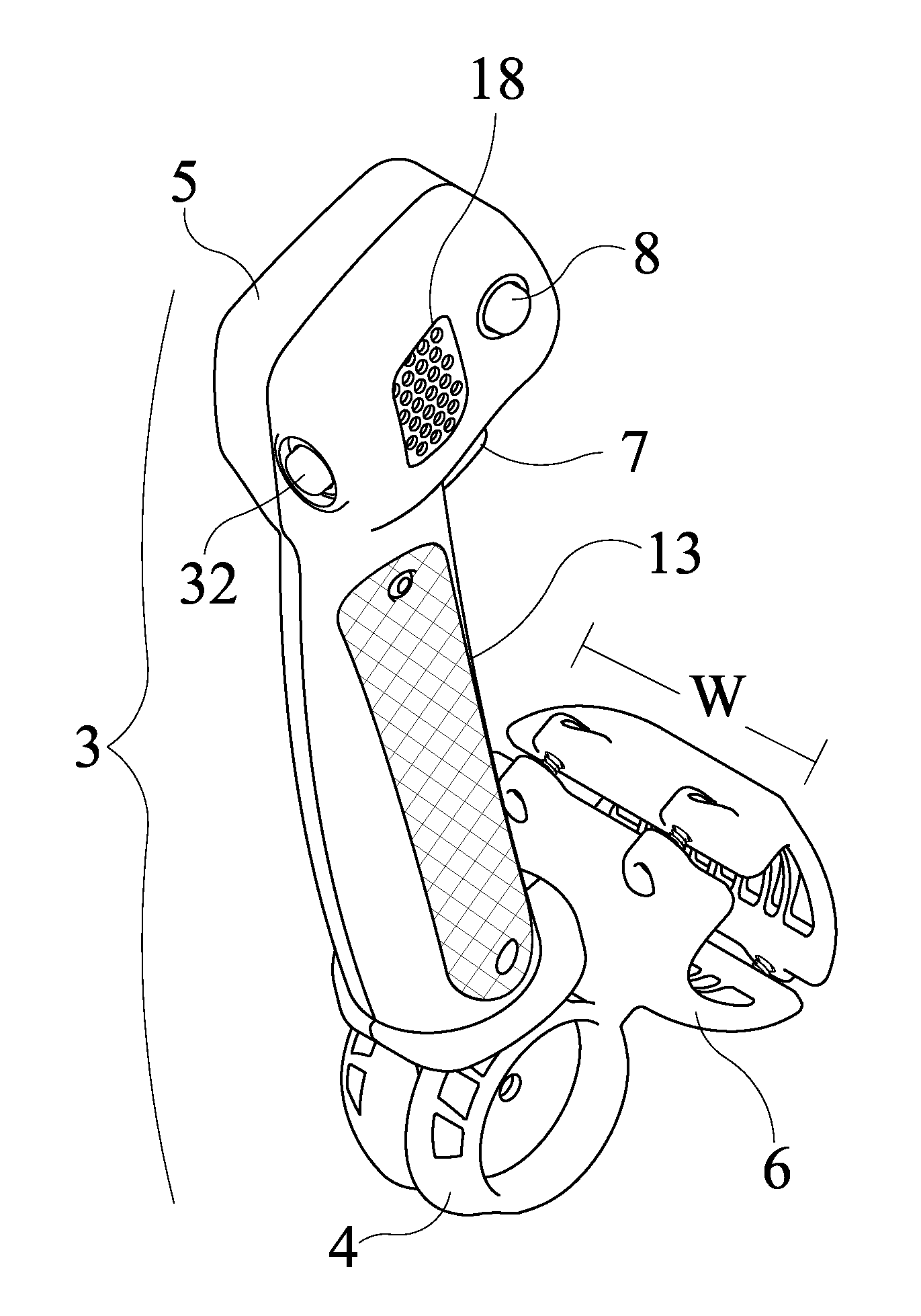Thematic, Interactive, Adjustable Handle Extension For Wheeled Device
a technology of adjustable handle and wheel, which is applied in the direction of wing knobs, furniture parts, manufacturing tools, etc., can solve the problems of depriving a baby/toddler, reducing the enjoyment of pushing, and reducing the initial excitement of such pushing, so as to achieve less distance
- Summary
- Abstract
- Description
- Claims
- Application Information
AI Technical Summary
Benefits of technology
Problems solved by technology
Method used
Image
Examples
embodiment 3
[0024]Turning to the figures, FIG. 1 illustrates an aeronautically-themed handle extension device embodiment 3, comprising a bottom end 4 and a top end 5. The bottom end 4 may comprise a connecting means such as (in the embodiment shown) one type of clamp 6. The clamp 6 may be strategically shaped for attaching / mounting / fastening to several different sizes of handles. More specifically, in the embodiment shown, the clamp 6 may comprise essentially two halves 27, 28 of an oval connected on opposite sides by screws 29, 30, the tightening of which may decrease the diameter D of the oval interior so that the clamp 6 may tightly apply pressure to several points of a handle 10 (or another 20 shown in FIG. 6) therein. The clamp 6 and sides of the interior oval, and the degree to which the screws 29, 30 may tighten, may all be configured for stably mounting to predetermined and common sizes of handles. In addition, as shown in FIGS. 2 and 3, the clamp 6 may comprise a width W for securely m...
embodiment 24
[0027]In addition to being able to adjust to different positions along a transversely aligned handle bar 10 as shown in FIG. 4 in order to create a vertically-oriented handle extension 3 perpendicular to the horizontal handle bar 10, the device 24 may also provide other potentially advantageous orientations of handle extensions. For example, the embodiment of the handle extension device 24 shown in FIG. 5 may have a means for allowing several adjustable settings of forward and backward inclination 27, for example, ranging from about 90 degrees 21, 75 degrees 22, and 61 23 degrees, from either the horizontal or (semi-)vertical axis, depending on whether the embodiment of the device 24 is attached to a transversely aligned crossbar 10 or an at least semi-vertically aligned handle section 20 (since the device 24 may attach along a semi-vertically aligned axis corresponding to an at least semi-vertically aligned handle 20, as shown in FIG. 6). Such settings of forward and backward incli...
PUM
 Login to view more
Login to view more Abstract
Description
Claims
Application Information
 Login to view more
Login to view more - R&D Engineer
- R&D Manager
- IP Professional
- Industry Leading Data Capabilities
- Powerful AI technology
- Patent DNA Extraction
Browse by: Latest US Patents, China's latest patents, Technical Efficacy Thesaurus, Application Domain, Technology Topic.
© 2024 PatSnap. All rights reserved.Legal|Privacy policy|Modern Slavery Act Transparency Statement|Sitemap



